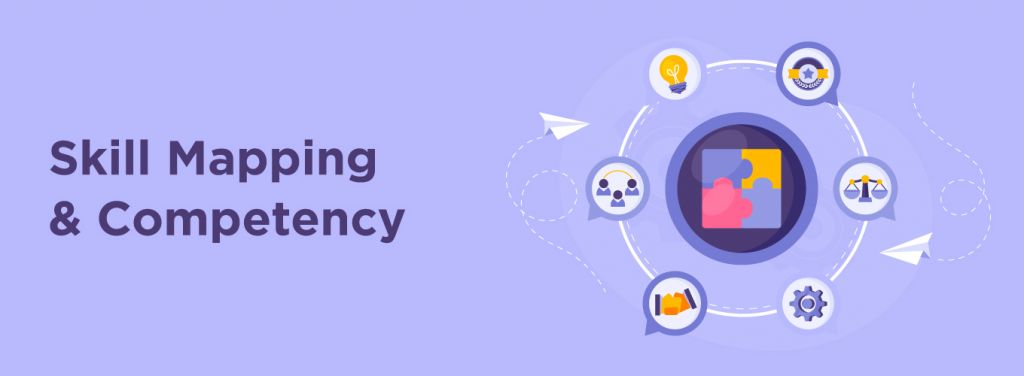The ability of people to navigate the continuous and somewhat unpredictable world of work has become more important than ever before. Therefore, the development of a good skill mapping and competency check becomes a necessity. People understand that the market has changed; if they intend to remain competitive and trendy, they ought to improve their skill set and master a wide array of competencies. Skill profiling and competency architecture as well as professional systems help in the realization of this mission through rational approaches of assigning, developing and utilizing the talents as well as the relationships of choice. This piece of writing examines the importance of mapping skills and competency. Firstly, it illustrates a clear understanding of the terms and their related benefits, then it goes to the evolving environment of career development.
Table of Contents
What is skill mapping ?
Skill mapping is a coherent process consisting of identifying, evaluating, and documenting the human resource in every aspect including their abilities, knowledge, and skills. It renders basic skills and weaknesses analysis of a person, as from this fact a more precise and systematic course of obtaining special skills might come into view. In addition, the evidence that “competency” encompasses the attributes, behaviors, and performance that makes the work effective is given. The core elements of competency frameworks, which refer to the main skills and features needed for doing a particular job or functioning in a particular industry, are explained in the next part.
Skill mapping and competency assessment entail a common practice which makes it a whole package that checkpoints ability growth. Via identification of the current abilities of people in an organization, employers can create competent development programs that would serve to fix the evident deficiencies. The dynamic nature of workplaces and ever-changing skill requirements are the main reasons why proactiveness, in this regard, is a must. This proactivity will equip employees with the skills needed to maximize their performance in their current positions and also be able to adapt.
The advantages of skill mapping
Strategic Workforce Planning:
Skill mapping helps managers capture the required workforce information such as skill sets which can be used in strategic human resource planning. Through revealing what skills the current workforce already has, organizations can take better informed actions regarding recruitment, training, and people get to stay in the company. This strategic plan helps the organization to have the precise blend of skills in the appropriate amounts to be able to efficiently pursue its goals and effectively react to the trends.
Emphasis on Soft Skills
While certain technical skills still matter, it has become more important to count on soft skills for getting things done in modern working environments. The most valuable work skills such as communication, teamwork, critical thinking, and adaptability are becoming in-demand for various jobs. Today’s competence approach should not be completed without soft skills, especially because it allows us to complete the evaluation of a person’s potential.
Remote Work and Virtual Collaboration
The increased popularity of distant work has led to the quest of novel means of measuring and mapping the skills. Skills that are needed for remote work are an essential part of today’s workplace context while collaborative virtual work, online communication and self-motivation for remote workplace environments is definitely required. Advancements in skill mapping tools and frameworks necessitate the rise of a competency to evaluate these skills.
Lifelong Learning and Continuous Development
As automation continues to disrupt the job market, the need for a diverse set of skills and adaptability will become increasingly essential for individuals to navigate this ever-changing landscape.
Continuous improvement has already taken precedence over the one-time workshop: professional development is a never-ending process. Beyond the walls of conventional learning venues, the concept of lifelong learning has been introduced focusing on the fact that people will have to consistently acquire new skills in order to cope with various changes during their working lives. Strengthen Ability approach and competency framework are to back and encourage culture of lifelong development to ensure that an individual holds relevance in either of his fields.
Conclusion
In the rapid and aggressive cycle that the world of today offers, skill mapping and competency appraisal of individuals and organizations have become unavoidable tools that are critical in achieving success. Alone these processes provide a clear picture of a person’s present level of abilities as well as point the way for further development and growth. Companies are to plan and formulate their strategic workforce more carefully and the development of competencies as a way to increase performance and adaptability are the focus.
With the dynamic nature of the work environment, organizations need to continuously adapt the system and structure that govern the employee in it. The continuous adjustment of skill mapping and competence assessments to the new reality of workplace demands puts more emphasis on soft skills, way of working in the remote mode, and approach to personal development.
FREQUENTLY ASKED QUESTIONS
1. What is skill mapping in the context of job development and career building?
Skill mapping should never be underestimated by those who want to do career building because it shows people the areas where they are good and those which need to be improved.
2. What is the role of the competence framework in the development of a more inclusive work environment?
The competency framework when established in an inclusive manner is the major contributor of diversity and inclusion in the workplace. With competencies that give credit to qualities such as cooperation, consideration and cultural acceptance organizations can begin to shape an environment that will welcome and affirm diversity. Inclusive competency frameworks could play a vital role in averting such biases, as it makes the hiring and promoting procedures fair for everyone, regardless of their origins.
3. What technology is involved in today’s competency mapping activities?
Technology is an important aspect of updated skill mapping methodology. There is an emergence of instruments and platforms that are able to gather and process the information related to individual skills. Artificial intelligence and machine learning algorithms may detect patterns of skill trends and thus the organization may become data-driven in their decision-making process.









